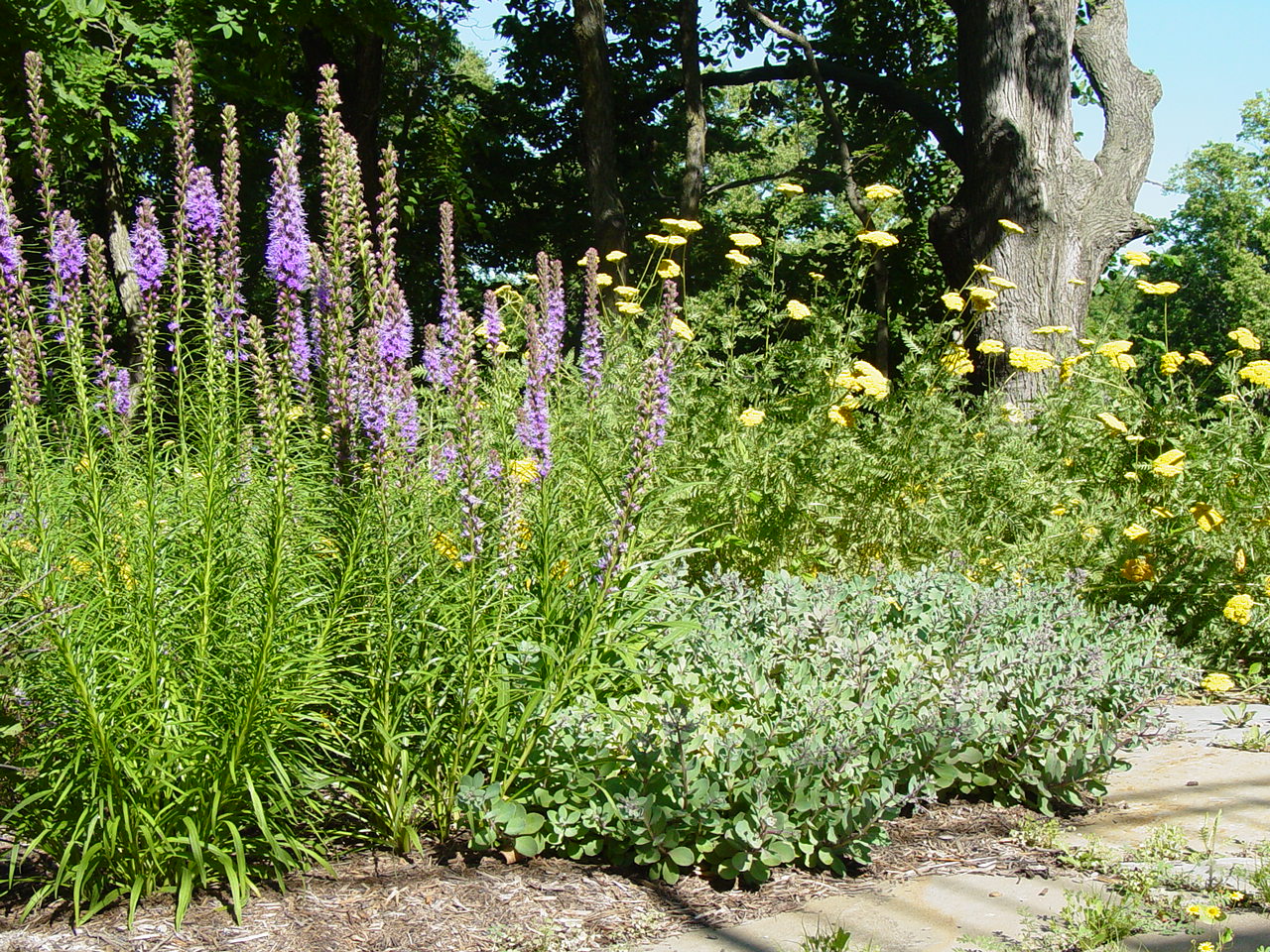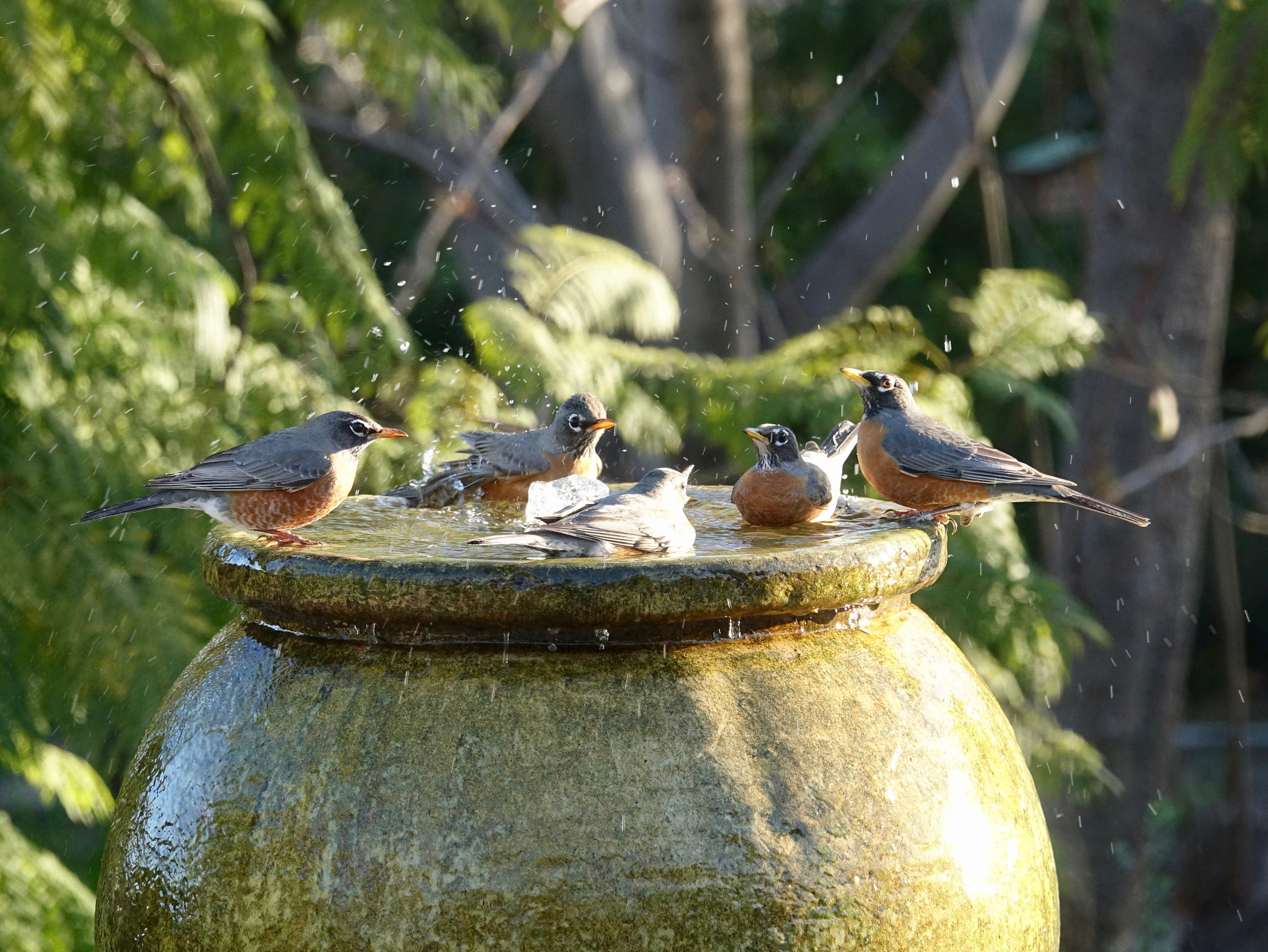Growing up, the lawn, especially in the front of the house, was my father’s pride and joy. He spent hours and probably a small fortune coddling his grass. Every blade was cherished; it got exactly the right amount of fertilizer, pesticide, herbicide and water. It was mowed, edged and raked profusely. No leaf ever laid on it for longer than what seemed 30 seconds. I even remember seeing him cringe as I walked across it. After all, he had provided us with sidewalks.

The “perfect lawn has been a status symbol in the United States.
My father was not the only one who has had an obsession with the “perfect” lawn. Having that stretch of perfect green around the house has been and still is in some ways equated with “making it” in our culture. Today, though, some are questioning what it is that we are “making” with our obsession with huge perfect lawns.
The 48 contiguous states cover approximately 3.1 million square miles from coast to coast. Over 63,000 square miles of our land, or an area comparable to the state of Texas, is dedicated to suburban residential lawns. Homeowners spend an average of 40 BILLION dollars annually to care for their lawns. They use an average of 200 gallons of water per person per day to maintain their lawns and dump 90 million pounds of pesticides on them. It takes 3 BILLION person hours to care for them and 35% of the air pollution can be attributed to emissions from the equipment used to mow, treat and fertilize them.
Ecologists have determined that in recent years, our native ecosystems are becoming endangered, which means that many of our native species of plants, animals and birds are becoming endangered too. They point out that of our 3.1 million square miles of land, only 3% – 5% remain untouched by man, meaning there are no roadways, high voltage power lines or oil and gas pipelines running through them. The rest of our land, 95% – 97% is dedicated to agriculture and human development.

Orchard orioles are one of the species that could become extinct.
The reality is that this land will never return to wilderness and the species who lived there will continue to decline in numbers. Using birds as an example, since 1966, 51% of our native thrushes, hawks, wrens, swallows and orioles have disappeared. If we continuing in this trend, ¼ of our native bird species will be functionally extinct within 100 years.
In his book Bringing Nature Home, Doug Tallamy offers a reasonable and achievable solution to the ecological problems we face. He suggests that we “design our spaces to meet the needs of our disappearing species.” By creating what he terms “islands” throughout our neighborhoods, we can both recreate pockets of habitats and still enjoy our lawns and landscaping – a win for plants, animals and people.
As we discussed in Monday’s posting Native Plantings Are for the Birds, providing a reliable and nutritious food source for birds is the first of a three-pronged approach to creating an island habitat for native birds. Making sure that the area is a sanctuary for them is the second prong.

Corners of a yard can become excellent birding spots by including native plants. Design by Dan Nelson
When humans are searching for a place to live, they carefully research the pros and cons of possible neighborhoods based on their personal needs and wants. In a sense, birds do the same thing as they search for native habitats that meet their needs. With a little planning, urban yards can be modified to provide the types of environment that native birds require to flourish. Part of existing lawn areas, particularly around the perimeter of the yard, can be converted to spaces especially suited to birds.
One of the first steps a landscape designer takes in creating a sanctuary for native birds is to replicate the look of the natural environment by choosing plants that are native to the area and by following the structure, flow and relationships of the plant materials. Most natural areas are layered with the larger trees creating what is called the canopy, or top layer, followed by the understory of shorter trees and medium shrubs, the intermediate layer with shorter shrubs and leafy plants and finally the ground layer, consisting of plants, often short grasses and ground covers, that stay close to the earth.
All of the layers are important to the design since each is necessary for attracting and protecting a variety of birds. Birds in the Tanager family, for example, can often be found nesting and singing in the canopy, while birds like robins, cardinals and finches thrive in the understory. Several species, such as quail, pheasants and peregrine falcons, are considered ground birds since they prefer to nest on the ground. Adding a clump of evergreen trees and shrubs to the design adds shelter for the birds during inclement weather and gives safe sleeping space. Vining plants are also a recommended element of the design as they not only are good insect producers, but are also used by many species of birds as nest building material. Thorny bushes are good protection from predators.
Most homeowners are anxious to remove dead trees and branches from their property, however landscape designers, knowing that bird populations can make good use of them, have found ways to incorporate the materials into a naturalistic design. Dead trees, called snags, are used for nesting, perching and drumming by woodpeckers. The insects living under the bark of dead trees are an abundant food source for many types of birds. Dead branches can be stacked to create brush piles used for protection from cold weather and from predators.
Instead of bagging fall leaves for trash pickup, homeowners can make use of them. Dead leaves can be raked into 5 to 6 inch piles and placed in shady spots under existing shrub beds. Birds can pick through the leaves, foraging for insects and once the leaves decompose, the compost will create a perfect environment for earthworms, a favorite food for many birds and a benefit for the soil.
The third prong of a natural environment for birds is a constant supply of clean, fresh water. Although a source of running or falling water as in a stream or waterfall tends to attract the greatest number of birds, a simple birdbath can also suffice. Birdbaths need to have a shallow bowl (remember, birds have very short legs!) or cobblestones can be added for the birds to stand on as they drink or bathe. The water source needs to be located away from areas where predators can hide but near enough to shelter that the birds feel safe. Raised birdbaths tend to be safer for birds than those that sit directly on the ground. The water needs to be replaced every few days to make sure that it does not harbor any bacteria that could spread disease and birdbaths themselves should be periodically cleaned for the same reason. Availability of water in the winter is especially critical for birds since so many of their usual water sources are frozen solid. Putting warm water in a birdbath several times a day can keep the water thawed, but the use of electric or solar powered heater can be more convenient.
Although we cannot bring back the acres of untouched wilderness our country once contained, working with landscape designers who are committed to preserving our natural world, we can make a difference one yard at a time.


